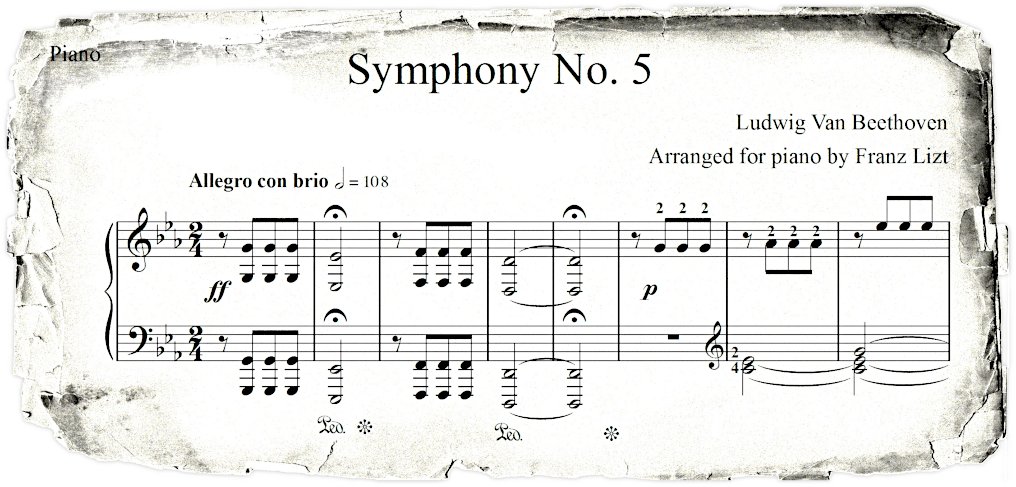Beethoven and You… or What are Sequences?
A scale sequence is a short, melodic phrase or cell played from each note of a scale. A great example of the use of a scale sequence is the opening of Beethoven’s 5th Symphony. This piece is so well known, it’s hard to imagine anybody who hasn’t heard it. The opening measures of this piece are probably the most famous eight notes ever written.

Listen:
Let’s see what the opening theme looks like on the guitar:

Listen:
If we break it down even further and play just the bottom note of each octave, we can see the beginning of a scale sequence:

Listen:
The first four notes of the theme form a melodic cell. A melodic cell is the source idea that is used to generate larger phrases. For a scale sequence, the melodic cell is played from each scale tone, in order, ascending or descending. In the case of Beethoven’s 5th, the melodic cell is three repeated notes followed by one note a 3rd lower. (For our purposes, a 3rd is equal to play a note; skip the next note; play the following note.)

Listen:
Beethoven turns the melodic cell into a scale sequence by using the same note pattern but starting from the next lower note in the scale:

Listen:
We can take that idea and extend it by playing the cell from every scale tone in descending order::

Listen:
We now have a one-octave scale sequence Two factors make up our sequence—we played the same melodic idea (cell) from each note of the scale, and we used only notes found in the scale to play the melodic idea as we descended the scale. This second point is important. Scale sequences are mostly diatonic. Diatonic in this case means using only notes from the scale. The result is that any melodic idea you sequence through a scale will change shape on the fretboard in order to follow the scale.
Compare this sequence of parallel 3rds to a sequence of diatonic 3rds:

Listen:

Listen:
You can clearly see that in the parallel example the shape of the interval stays the same as you move the sequence up the fretboard, while in the diatonic example the shape of the interval changes to follow the scale as you move up the fretboard.
All of the sequences included in Scale Patterns for Guitar are diatonic sequences save for the final six. The final six sequences use chromatic notes from outside the C major scale as approach notes to the scale tones.
Click here to order your copy today!
Continue to the Scale Sequences


